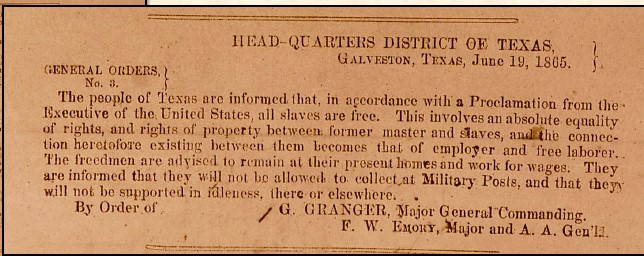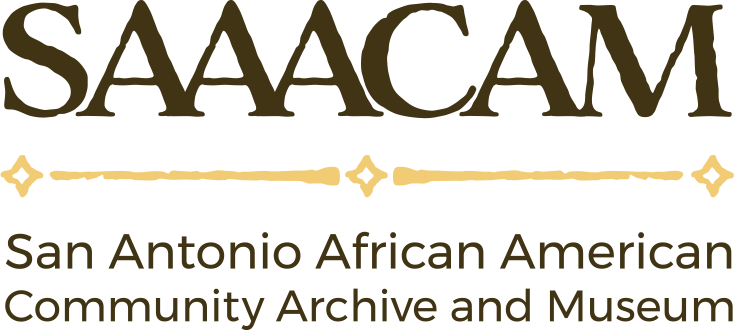
The announcement at Galveston, Texas, on June 19, 1865 of General Granger’s General Order Number 3, began most significantly with these words: “The people of Texas are informed that in accordance with a Proclamation from the Executive of the United States, all slaves are free.” Indeed, it was great news and a “Jubilee Day” despite the fact that it was two and one half years late. Lincoln issued the Emancipation Proclamation on January 1, 1863, but slave owners kept it secret as long as they could. It is important to note that the hell of racism and white supremacy would not be over, and despite the order slavery and oppression continued for a long time after the announcement of freedom. Here, James Smallwood provided valuable history.
Texas had almost 300,000 slaves by the time this order was given. Enslaved African Americans were first brought to Texas by the Spanish, but Moses Austin brought many during the 1800s. One owner, Jared Groce, had the largest plantation in Texas in 1825 and was a great “friend” of the pro-slavery men of Travis, Crockett, and Bowie; these vile men were no friends of freedom. During slavery, Texas was used as a place where slave owners could protect their human property from emancipation until Mexico outlawed it. The Austin colonists brought some 400 enslaved Black people into Texas eventually causing the War for Texas Independence.
Many Blacks celebrated at Galveston, but across the state there was fear as the owners of human beings threatened to murder any Black leaving the plantation. In fact, one Texas County passed a law “vowing to hire no blacks and to whip any freedman who tried to contract with whites.” Some former enslaved people tried to stay on the plantations as paid workers but one owner, Thomas Greer in Madison County, Texas, threatened to kill any black that tried to stay on his plantation. In some cases, Blacks were given water laced with rat poison rather than letting them leave the plantation. In San Antonio, the authorities issued a curfew for “any type of black meeting” and white criminals often disguised themselves as black to commit crimes to reinforce the curfew. It was reported that one group of white criminals beat a man disguised in “blackface” in Brenham, Texas. White newspapers carried fake stories that the federal government had rescinded the freedom order. This caused many plantation owners to ignore the Juneteenth order of freedom. Colonel George Custer, who was stationed in Texas at the time, “made no secret that he did not support” equality for Blacks.
More than 500 Black people were murdered by whites in Texas between 1865 and 1866. Some plantations issued death threats to Blacks if they tried to leave the plantation before summer crops were picked. Other racists escaped freeing their slaves by putting them on boats were ship captains took them to Brazil or Cuba to be sold as slavery still existed at these places. Unfortunately, General Granger was not the great lover of freedom some think. His actions forced free black people to remain with their old masters and warned that he would not allow blacks to gather at Union army posts for protection. He also required Blacks to carry passes to travel. Slavery by another name was established by the man that read the order. Juneteenth was a time of hope and despair in Texas and elsewhere. We need not forget these horrors, as today we are still victimized by racist police and believers in white supremacy.
